Are you struggling to strength training exercises for tennis? Do you find yourself losing matches due to lack of power, endurance, or stability on the court? Many tennis players focus solely on technique and strategy, overlooking a crucial aspect of their performance: strength training.
Imagine how frustrating it is to watch your serves lack power, or to feel your energy drain during long rallies. Picture yourself stumbling on the court, unable to maintain balance during quick direction changes. These issues not only affect your performance but can also lead to injuries that sideline you for weeks or even months.
But don’t worry! There’s a solution that can transform your tennis game: strength training. By incorporating essential strength exercises into your routine, you can boost your power, endurance, and stability on the court. This blog post will guide you through the top 7 exercises to enhance your game, show you how to build power for killer serves, and teach you ways to prevent injuries. We’ll also cover improving balance, developing core strength, creating a tennis-specific workout plan, and measuring your progress. Get ready to take your tennis performance to the next level!
Table of Contents
Why Strength Training Matters for Tennis
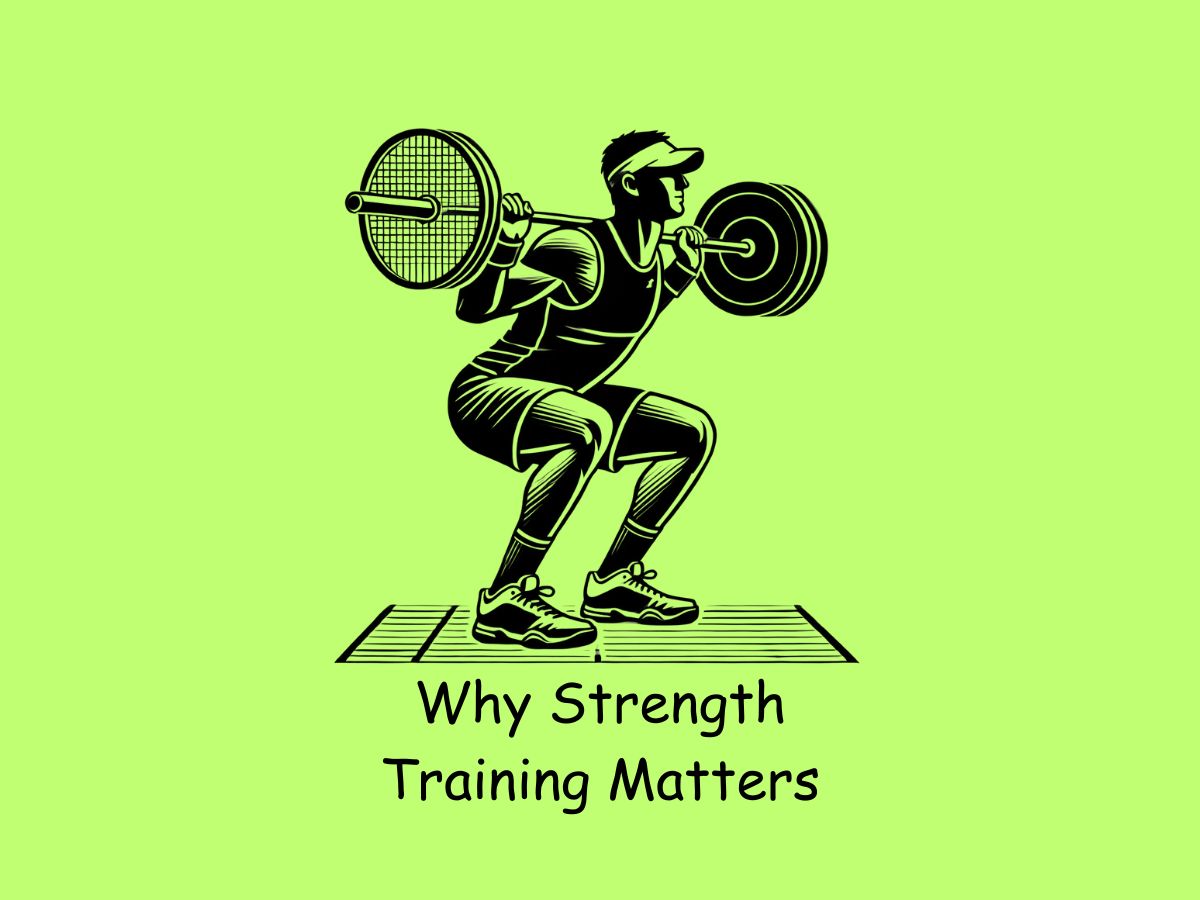
Tennis is more than just swinging a racket. It’s a sport that demands power, speed, and endurance. That’s where strength training comes in. By adding weights and resistance exercises to your routine, you can take your game to the next level1. Strength training helps you hit harder, move faster, and last longer on the court4.
One of the biggest benefits of strength training is injury prevention. Tennis puts a lot of stress on your body, especially with all the quick movements and repeated motions1. By strengthening your muscles and improving your balance, you’re less likely to get hurt4. This means you can play more often and enjoy the game without worrying about injuries.
Strength training also boosts your endurance. Tennis matches can be long and tiring. By building up your muscles, you’ll have more stamina to keep playing at your best, even in those tough, long matches1. Plus, strength training can help you recover faster between games and practices4. This means you can train harder and improve faster, giving you an edge over your opponents.
Top 7 Exercises to Boost Your Game
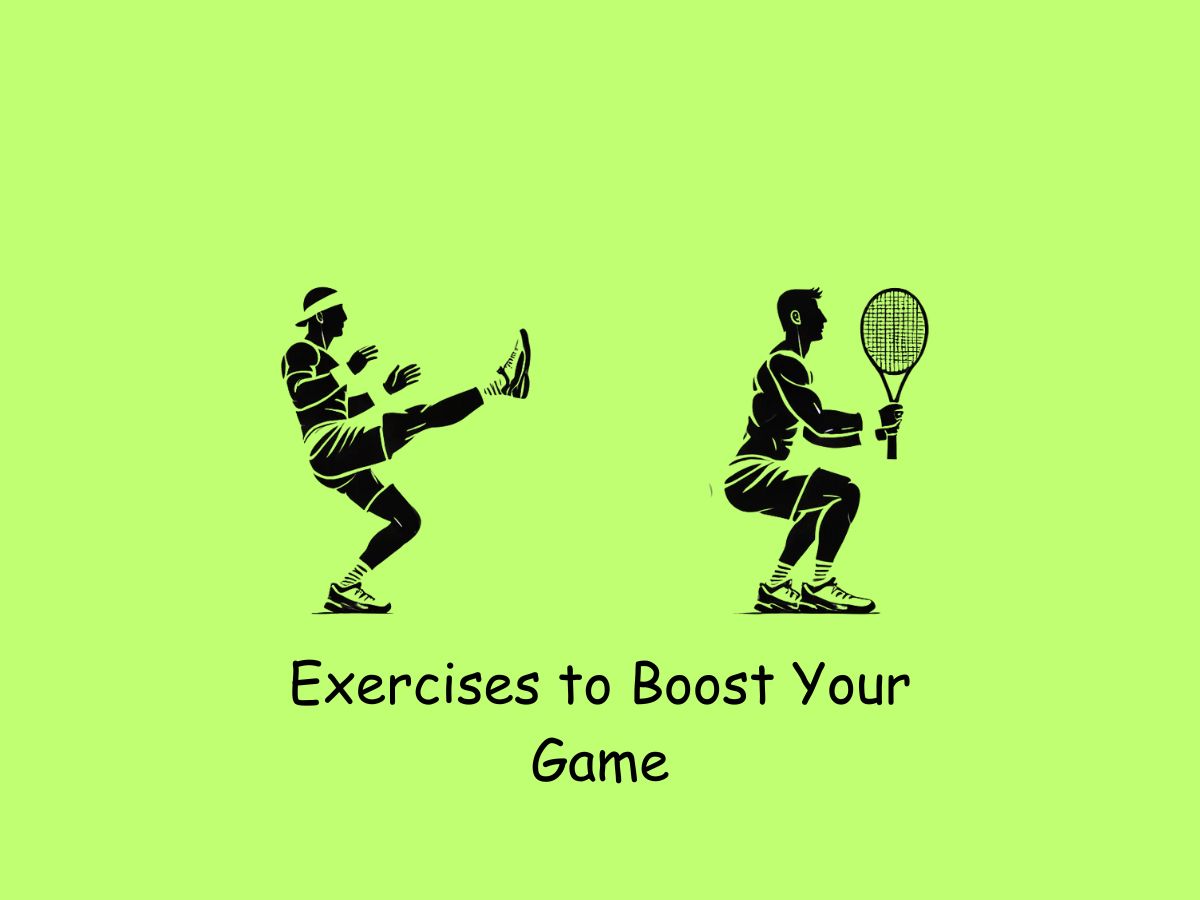
Ready to level up your tennis game? Here are seven exercises that will make a big difference on the court. First up is the overhead squat. This exercise works your legs and improves flexibility in your hips, back, and shoulders2. It’s perfect for building the strength you need for powerful serves.
Next, try the overhead medicine ball throw and the medicine ball chest pass. These exercises mimic the movements you make when serving and hitting forehand shots2. They’ll help you develop explosive power in your upper body and core. Don’t forget about the side plank, which targets your obliques – the muscles that help you rotate during shots2.
Lastly, focus on your forearms with pronation exercises. Strong forearms are key for adding power and spin to your serves2. Remember to include exercises that work your core, like bear crawls and cross chops9. A strong core is essential for stability and power in all your tennis movements. By doing these exercises regularly, you’ll see improvements in your strength, power, and overall performance on the tennis court.
Building Power for Powerful Serves
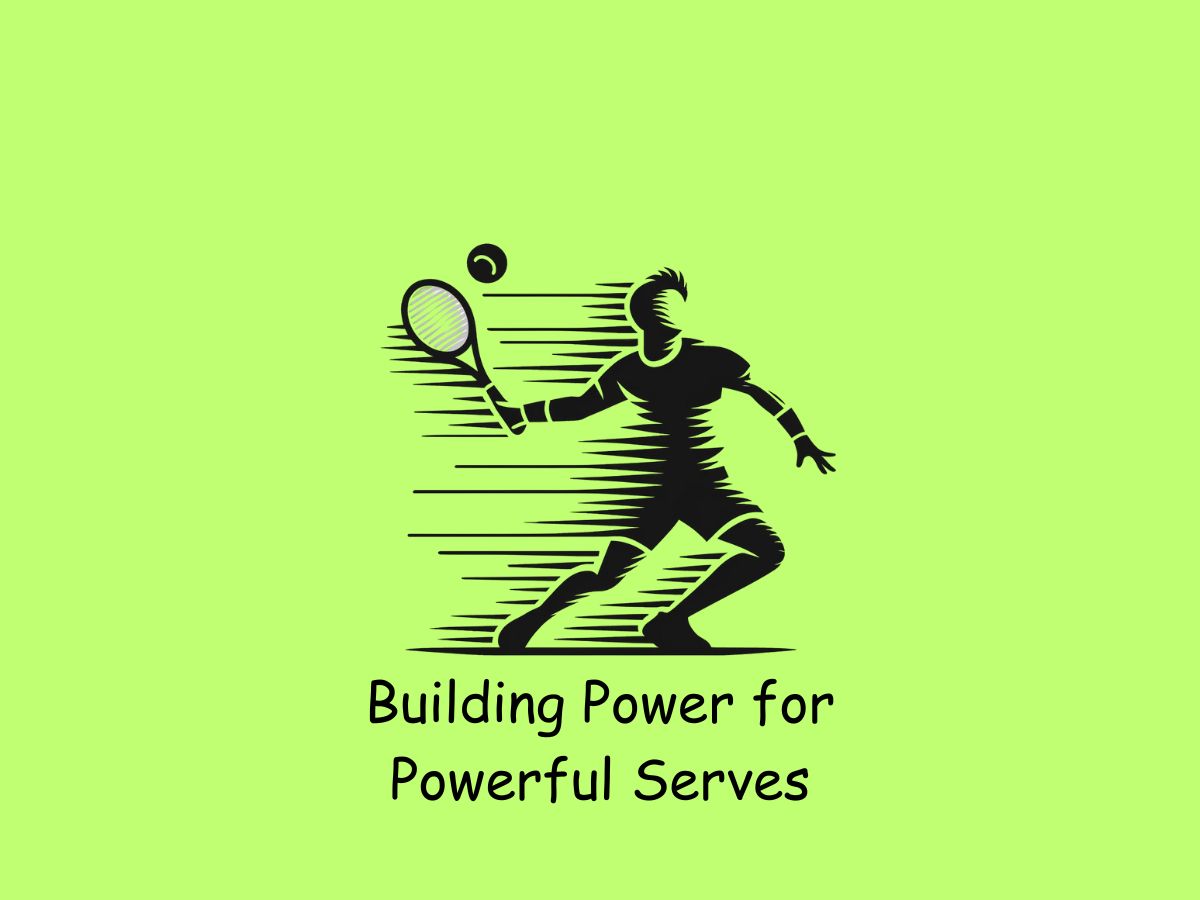
Want to serve like a pro? It all starts with building power in the right places. Your serve is one of the most important shots in tennis, and it’s not just about arm strength. In fact, most of the power in your serve comes from your legs and hips8.
To improve your serve, focus on exercises that work your whole body. Jump squats are great because they mimic the explosive upward motion of a serve8. They help you develop what’s called “triple extension” – that’s when your hips, knees, and ankles all extend at once, giving you maximum power8. Another good exercise is the medicine ball slam. This helps you practice the overhead motion of serving while also building strength8.
Don’t forget about your core and shoulder muscles. A strong core helps you transfer power from your legs to your upper body6. And strong, flexible shoulders are crucial for a fast, powerful serve5. Try exercises like the 90/90 shoulder external rotation with an elastic band to improve your shoulder strength and mobility8. With consistent practice of these exercises, you’ll soon see your serves becoming faster and more powerful.
Enhancing Endurance for Long Matches
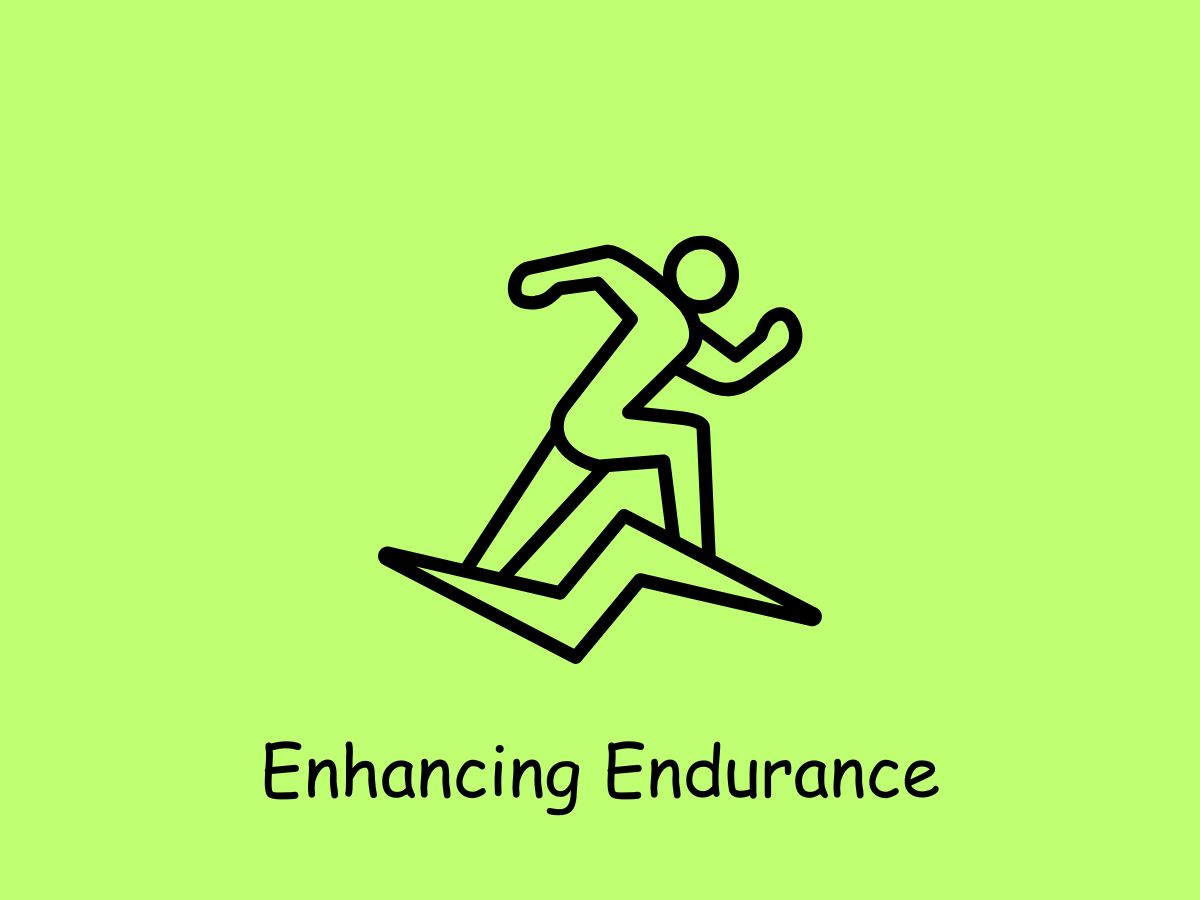
Tennis matches can be long and tiring. To play your best throughout the game, you need good endurance. This means having the energy to keep going, even when you’re tired. Luckily, there are exercises that can help you build this stamina.
One great way to improve your endurance is through cardiovascular exercises. Running and sprinting intervals are perfect for this. Start with a light jog for 5-10 minutes to warm up. Then, try sprinting for 30 seconds, followed by 90 seconds of walking. Repeat this for 10-15 minutes. Over time, you can make the sprints longer. This type of exercise mimics the stop-and-start nature of tennis, helping you recover quickly between points1.
Another effective method is circuit training. This involves doing a series of exercises one after another. For example, you could do 15 squats, 12 lunges on each leg, 10 push-ups, and hold a plank for one minute. Rest for 60-90 seconds, then repeat the circuit 3-4 times. This workout challenges your whole body and builds the kind of strength and endurance you need on the court13.
Injury Prevention Through Strength
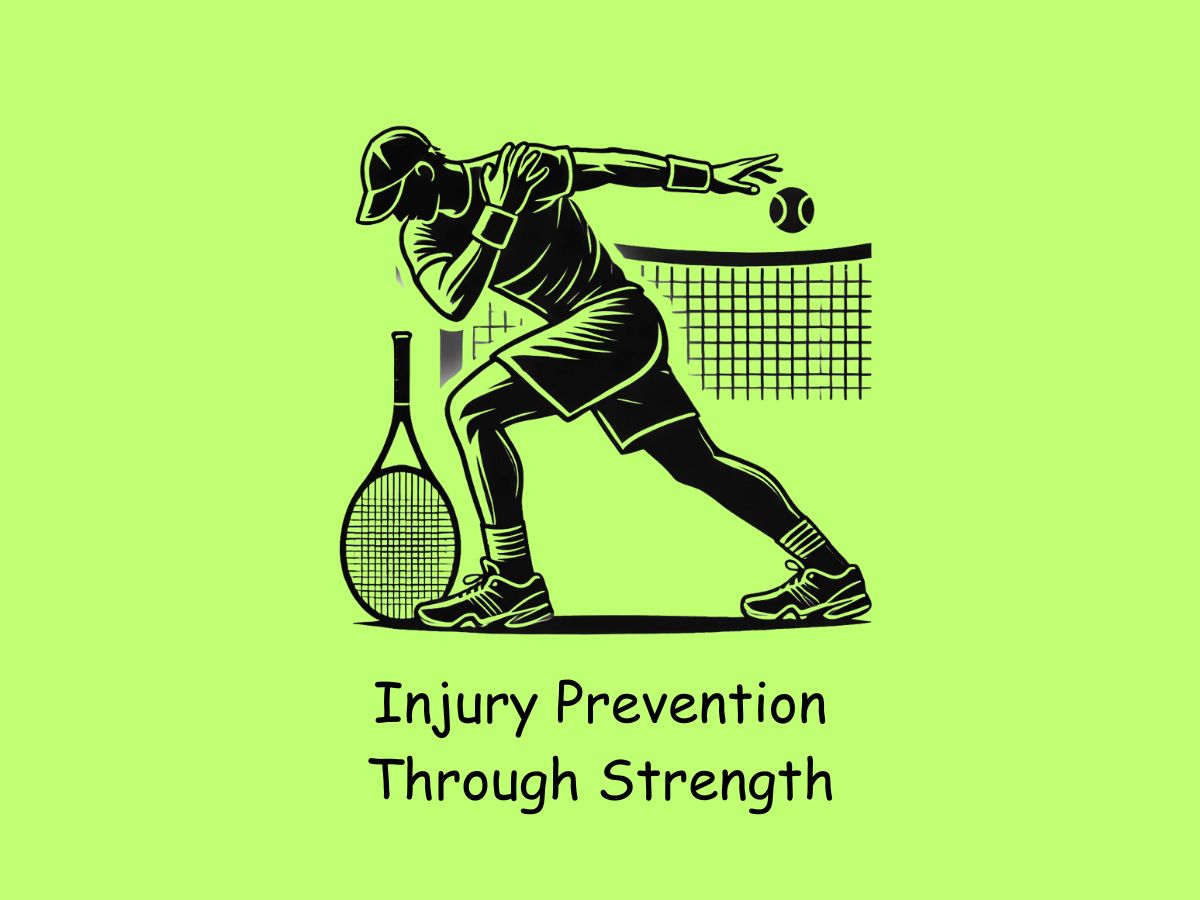
Staying injury-free is crucial for any tennis player. One of the best ways to prevent injuries is through strength training. By making your muscles stronger, you can protect your body from the stresses of the game. This is especially important because many tennis injuries happen due to overuse2.
Focus on exercises that work the parts of your body you use most in tennis. For example, squats and lunges are great for strengthening your legs. Planks and side planks help build a strong core, which is important for balance and power. You can also use resistance bands to work on lateral movements, which are common in tennis4.
Remember, it’s not just about lifting heavy weights. Dr. Alex Chin, an expert in the field, suggests gradually increasing the weight you use. This helps build strength safely over time. Also, make sure to do exercises that use a full range of motion. This improves your flexibility, which is another key factor in preventing injuries. By combining strength training with proper stretching, you can make your body more resilient and less likely to get hurt on the court2.
Improving Balance and Stability on the Court
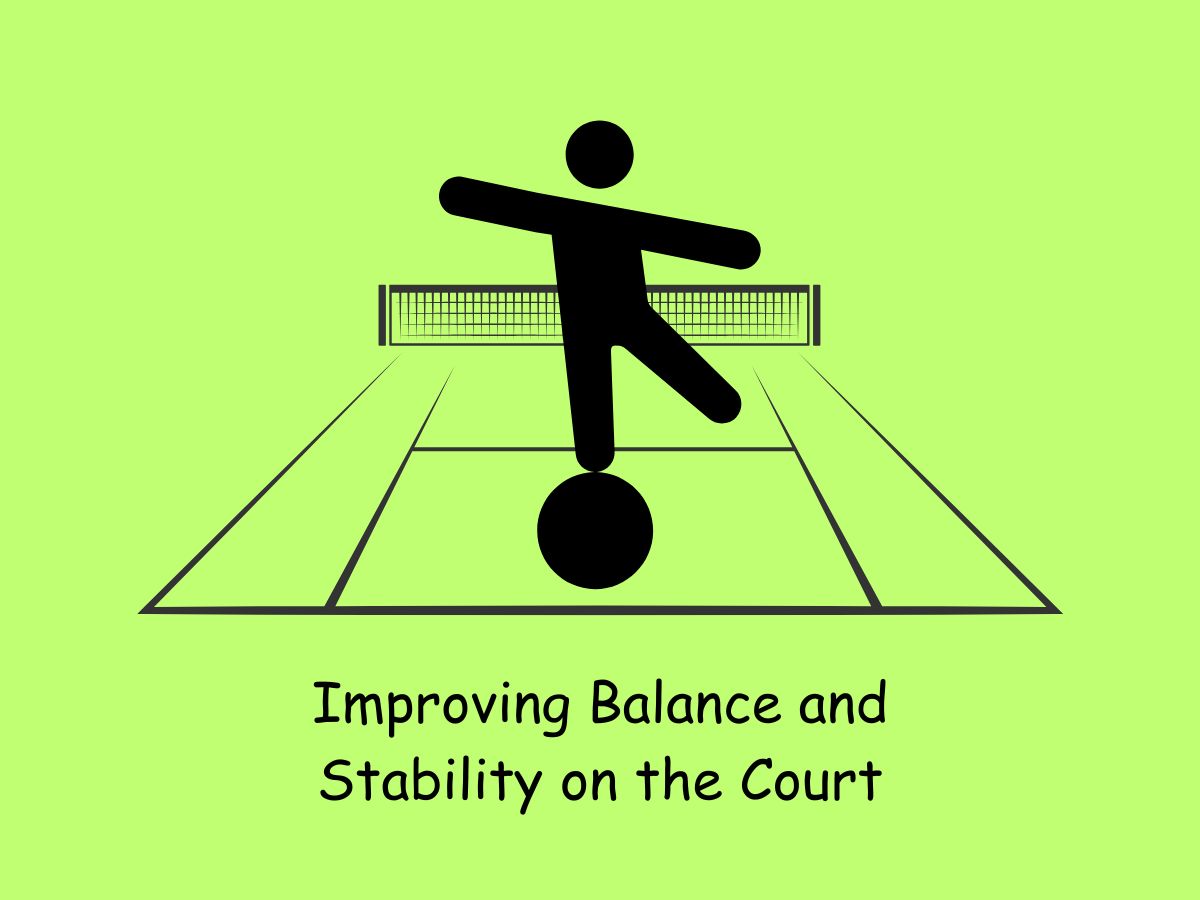
Good balance and stability are essential for tennis players. They help you move quickly and stay in control during fast-paced rallies. Improving these skills can make a big difference in your game and help prevent falls or injuries.
One effective exercise for balance is the single-leg stance. Stand on one foot and try to hold this position for 30 seconds. As you get better, you can make it harder by closing your eyes or standing on an uneven surface. This exercise strengthens the small muscles in your feet and ankles that keep you stable4.
Another great exercise is the medicine ball chest pass. Stand on one leg and throw a medicine ball against a wall, catching it as it bounces back. This not only improves your balance but also works on your core strength and rotational power. Start with 10 throws on each leg and gradually increase as you get stronger. Remember, good balance comes from a strong core, so don’t forget exercises like planks and Russian twists in your routine14.
Core Strength: The Foundation of Tennis Success
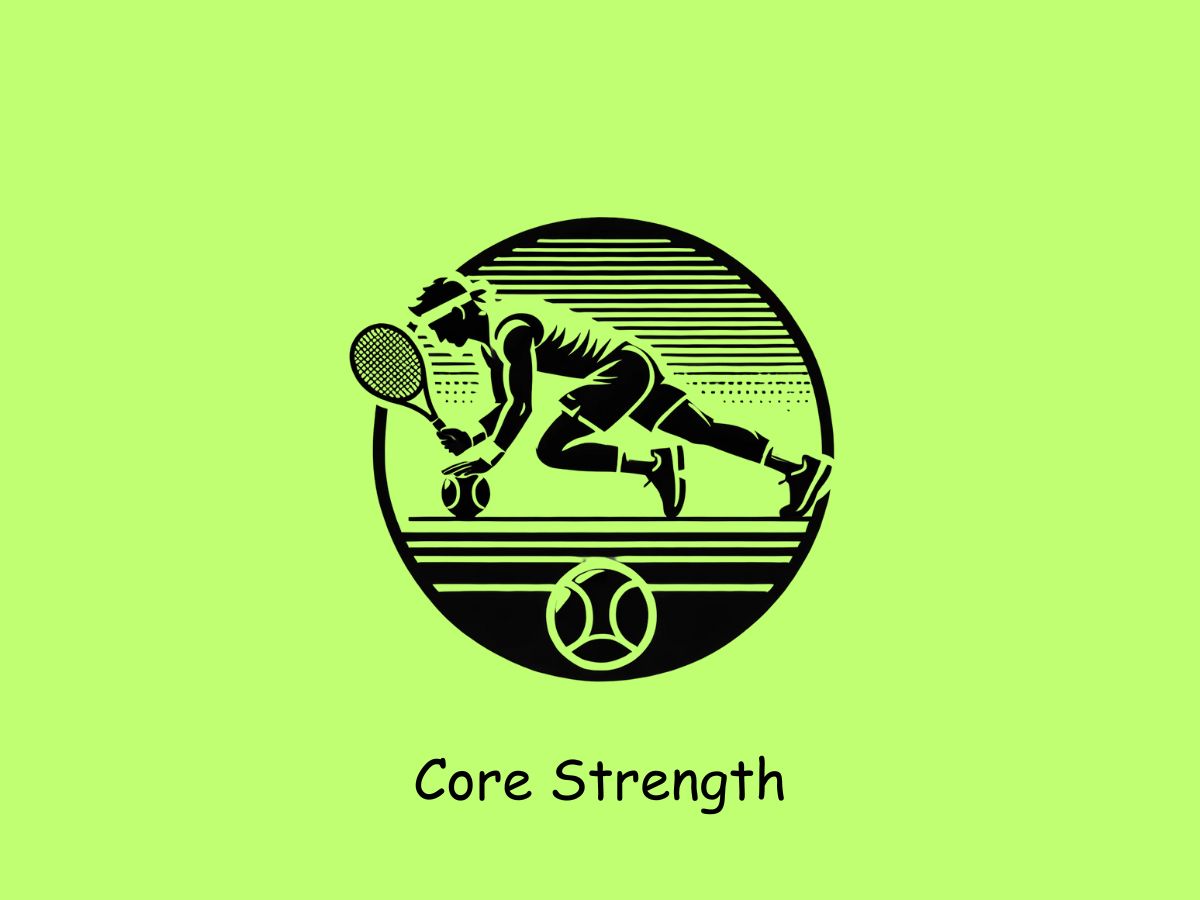
A strong core is crucial for tennis players. Your core muscles include your abs, lower back, and obliques. These muscles work together to help you move better on the court. When you have a strong core, you can hit the ball harder, move faster, and stay balanced1.
Core strength helps you in many ways during a tennis match. It allows you to transfer energy from your legs to your upper body, making your shots more powerful. A strong core also helps you change directions quickly and stay stable during fast movements3. This is important because tennis involves a lot of quick stops and starts.
Having a strong core can also help prevent injuries. Many tennis players get hurt in their lower back. By strengthening your core muscles, you can protect your back and other parts of your body1. Plus, a strong core helps you play longer without getting tired. This means you can keep playing your best, even in long matches3.
Creating Your Tennis-Specific Workout Plan
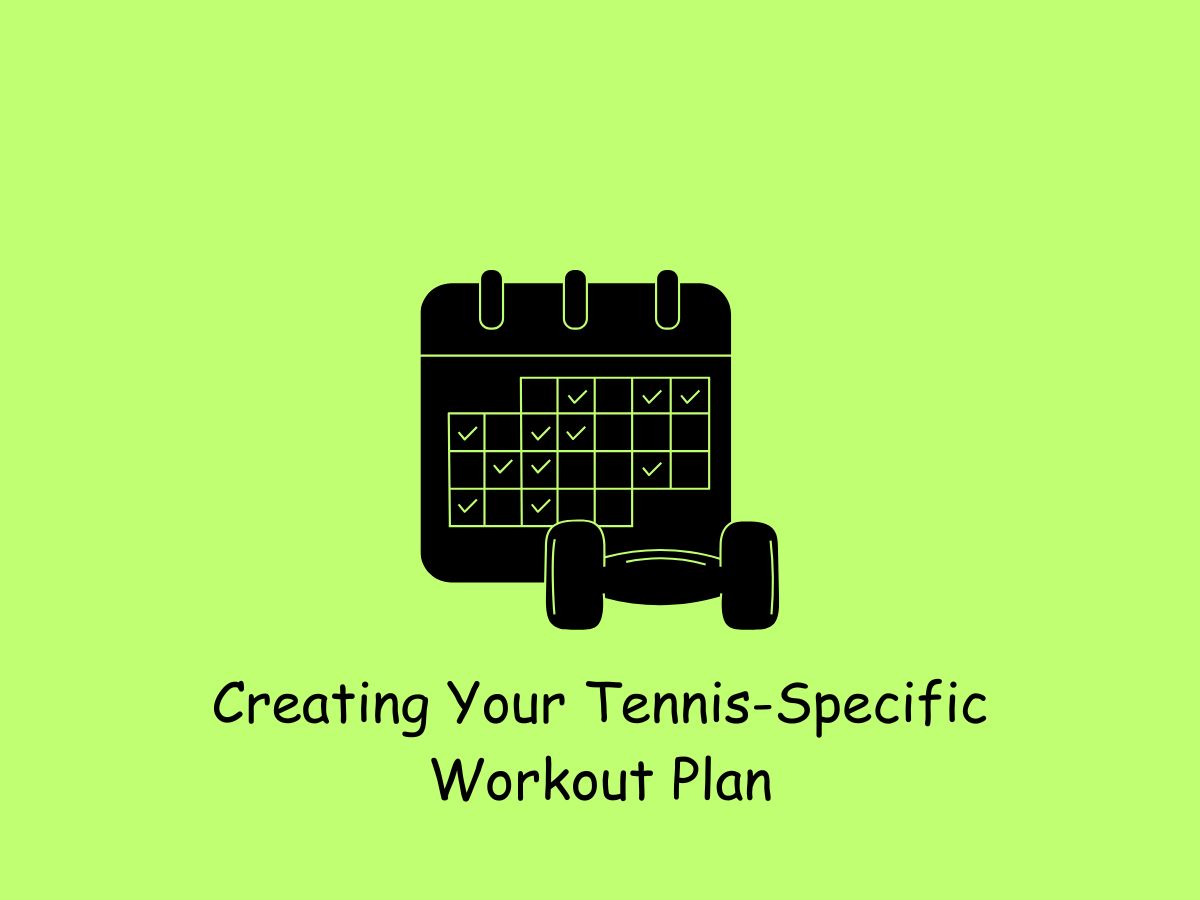
When making a workout plan for tennis, it’s important to focus on exercises that will help you on the court. Your plan should include a mix of on-court and off-court training. As you get closer to a tournament, you’ll want to do more tennis-specific exercises6.
Start with a general fitness phase where you build overall strength and endurance. This might include running, weightlifting, and core exercises. As you progress, add more tennis-specific training. This could include exercises that mimic tennis movements, like lateral shuffles or medicine ball throws6.
Remember to include exercises for all parts of your body. Tennis uses your whole body, so your workout should too. Focus on your legs for quick movements, your core for stability, and your arms and shoulders for powerful shots. Also, don’t forget about flexibility exercises to help prevent injuries7.
Measuring Progress: From the Gym to the Court
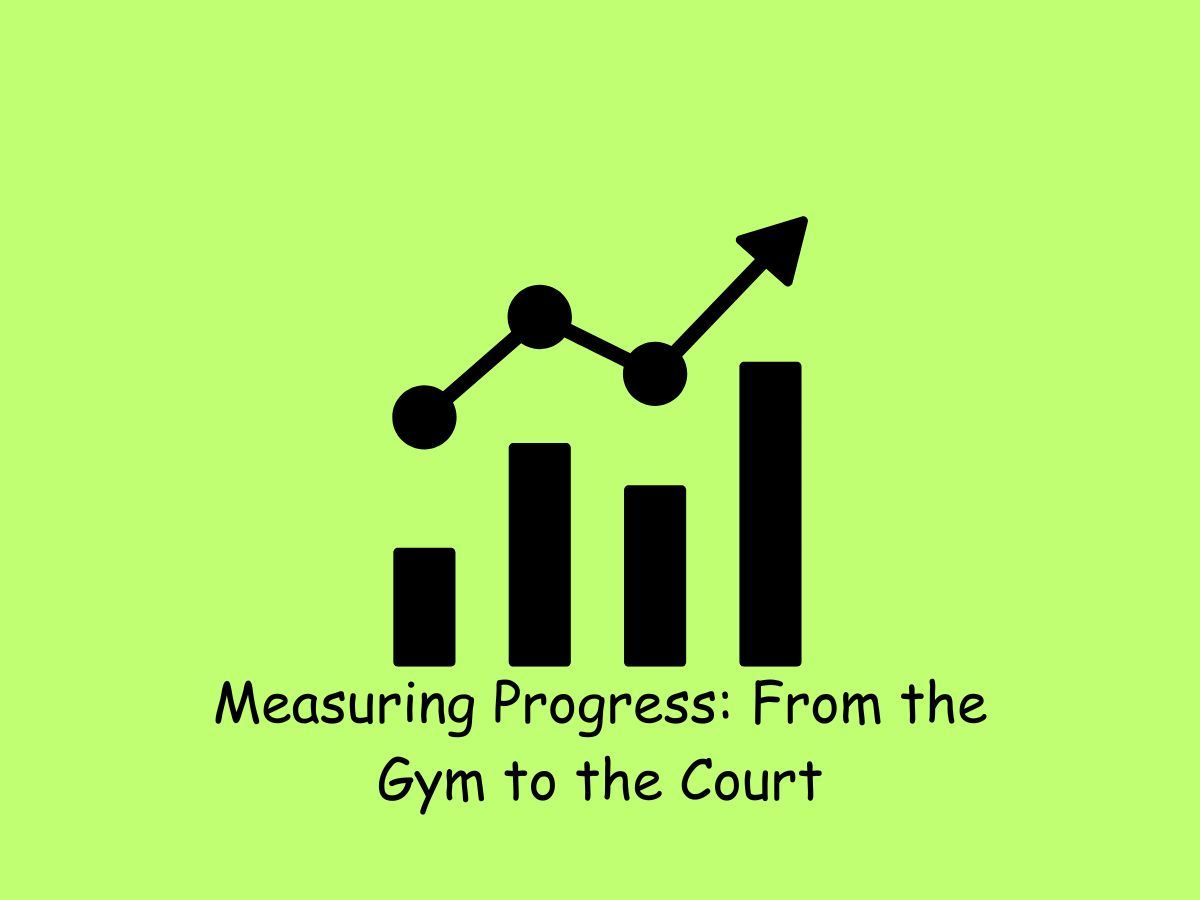
Tracking your progress is key to improving your tennis game. There are many ways to measure how you’re doing, both in the gym and on the court. In the gym, you can track how much weight you lift or how many repetitions you can do. On the court, you can time your sprints or count how many serves you can land in a target area10.
One simple way to track progress is to use a spreadsheet. Write down your best times for sprints, how many serves you can make, or how long you can hold a plank. Each week, try to improve on these numbers. This will show you if your training is working10.
Remember, progress isn’t always about big improvements. Small, consistent gains over time can add up to big results. Don’t get discouraged if you don’t see immediate changes. Keep working hard and tracking your progress, and you’ll see improvements in your strength, speed, and overall tennis performance10.
Conclusion
Alright, it’s your turn to put these tips into action! You now have the knowledge to improve your strength and take your tennis game to new heights. Don’t wait any longer – start incorporating these exercises into your routine and see the difference they can make.
Remember, consistency is key. Stick with your workout plan, track your progress, and don’t be afraid to challenge yourself. With dedication and hard work, you’ll be amazed at how much you can improve especially in your physical conditioning.
If you have any questions or need more advice, feel free to reach out. You can send me an email at jaiden@jaidensmedia.com, and I’ll be happy to help you on your journey to tennis success. Now go out there and dominate the court!
FAQs
Why is strength training important for tennis?
Strength training helps you hit harder, move faster, and last longer on the court. It also helps prevent injuries by making your muscles stronger and improving your balance.
What are some good exercises for tennis players?
Some great exercises include overhead squats, medicine ball throws, side planks, and exercises for your core and forearms. These help build power, stability, and endurance.
How can I build power for my serves?
Focus on exercises that work your whole body, like jump squats and medicine ball slams. These help develop explosive power in your legs, hips, and core.
How can I improve my endurance for long matches?
Do cardiovascular exercises like running and sprinting intervals. Also, try circuit training, which challenges your whole body and builds the stamina you need on the court.
How can strength training help prevent injuries?
Strength training makes your muscles stronger, which protects your body from the stresses of tennis. It also improves your flexibility and balance, reducing your risk of getting hurt.
What’s the importance of core strength in tennis?
A strong core helps you transfer energy from your legs to your upper body, making your shots more powerful. It also helps you change directions quickly and stay balanced on the court.
How do I create a tennis-specific workout plan?
Focus on exercises that will help you on the court, including both on-court and off-court training. Include exercises for your legs, core, arms, and shoulders, and don’t forget about flexibility exercises.
How can I measure my progress?
Track how much weight you lift, how many repetitions you can do, or how long you can hold a plank. On the court, time your sprints or count how many serves you can land in a target area.
How often should I strength train?
Aim to strength train 2-3 times per week, with rest days in between. This gives your muscles time to recover and rebuild.
Is it okay to lift heavy weights?
Gradually increase the weight you use over time. This helps build strength safely and effectively. Always use proper form to avoid injuries.
